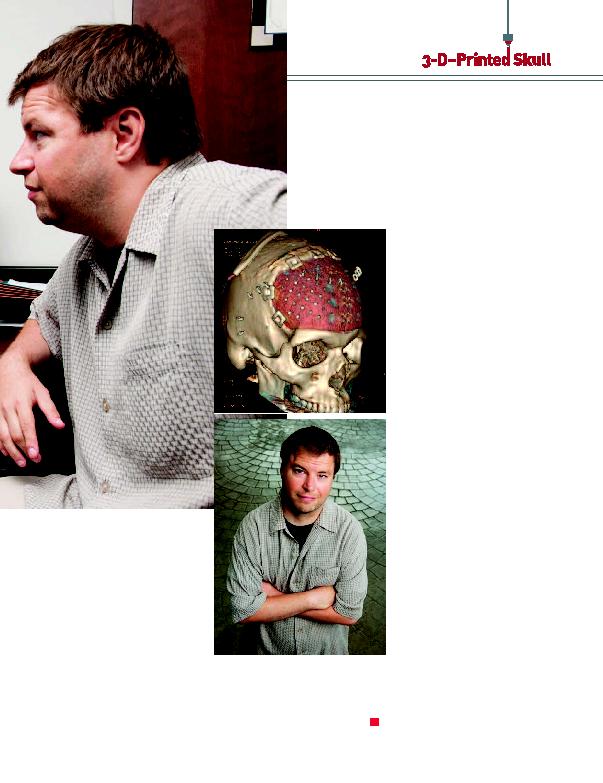
this?' But Dr. Gupta saved my life once,
and I trusted him completely."
3-D printing to create a customized cra-
nial skull implant for Cahill. The
implant is made of polyetheretherketone
(PEEK), a thermoplastic polymer that is
chosen for its strength, stability, and biocompatibility. Prior
to 3-D printing, surgeons used metal mesh to replace pieces
of the skull, but it was not as strong or as precise. The model
created by 3-D printing is an exact custom fit because it uses
the patient's CT scan. It is the best choice in cases of signifi-
a spokesman for the company, these implants have a better
anatomical fit, reduce operating time, and have more satisfy-
ing aesthetic results than traditional models. The implants
are also resistant to impacts and fractures.
lobe had contracted. To ensure the best possible aesthetic
Tushar Patel, MD, plastic and recon-
structive surgeon and partner at the
Plastic Surgery Center, to insert a skin
expander, which enabled Cahill to
have enough skin for surgery.
a four-hour surgery--shorter than a
traditional procedure due to the pre-
allowed for fewer modifications dur-
ing the process. The surgery went
smoothly and Cahill recovered well,
living on his own within four months
of the surgery, with the help of Dr.
Gupta. Because the incision is behind
Cahill. "I was happy I looked exactly the same and felt like
myself again."
Skull Skull